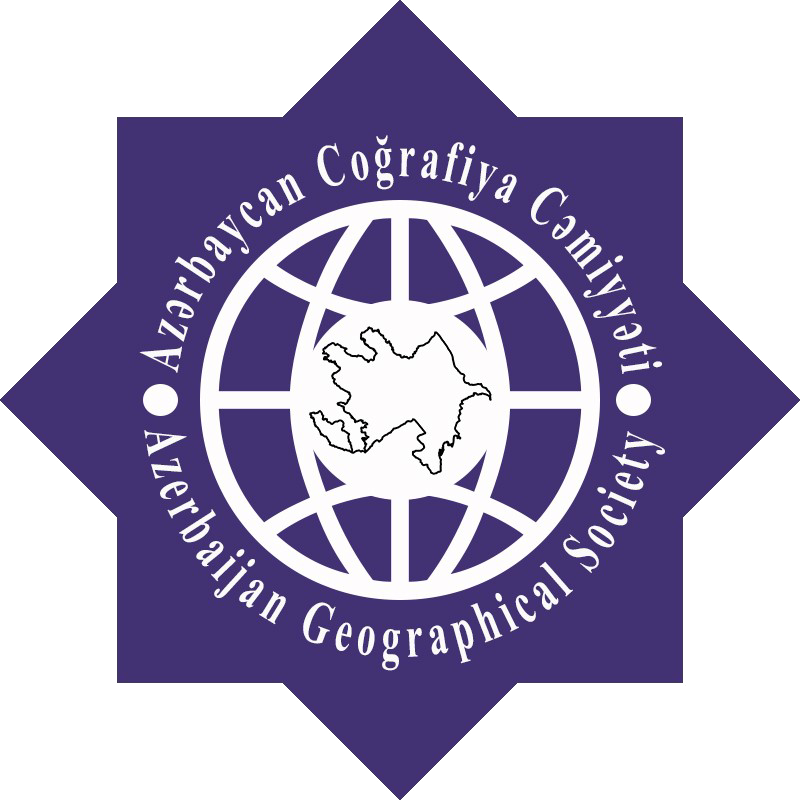DETERMINATION AND ASSESSMENT OF THE NATURAL TOURISM-RECREATIONAL POTENTIAL OF LANDSCAPES (SAMPLE AREA GUBA REGION)
S.T. Kazimova
Abstract. Assessment of the tourism and recreational potential of landscapes from the point of view of the development of the tourism industry in the modern world is one of the important issues. In this regard, the natural tourism-recreational potential of landscapes in the territory of Guba was evaluated during the research. At this time, all components of the landscape were analyzed. As a result of the analyzes, the elements affecting the recreational potential were grouped based on the point system. As a result, maps of tourist routes (itineraries) and natural tourism-recreational potential of landscapes of the Guba region were developed in the GI system using modern technologies. According to the map of the natural tourism and recreational potential of the landscapes of the region, there are 4 divisions in the area: landscapes with very low, medium, relatively high, and very high recreational potential. 14 major routes (itineraries) were selected on the tourist routes map. At the same time, tourism facilities, which will attract tourists, have been taken into consideration as much as possible.
Keywords: Guba region, landscape, tourism and recreational potential, tourist routes (itinerary), tourism analysis in GIS
REFERENCES
- Azərbaycan Respublikasının coğrafi atlası. BKF, Bakı, 2018, 226 s.
- Soltanova H.B.,Qasımov M.S., Ağasiyev Ə.R. Azərbaycanın kurort təsərrüfatı. “Nurlar”, Bakı, 2017, 248 s
- Гуляeв В.Г., Сeливaнoв И.A. Туризм: экoнoмикa, упрaвлeниe, устoйчивoe рaзвитиe. “Сoвeткий спoрт”, Мoсквa, 2008, 280 с.
- Чибилев А.А.Проблемы сохранения ландшафтного разнообразия Росии. “Международной конференции”, Иркутск, 2005, с 1-5
- Лось М.А.. Природный туристско-рекреационный потенциал ландшафтно-экологической среды: особенности его оценки и рационального использования. Географический вестник. 2013, 2(25), c.104-109
- Bruschi DP, Busin CS, Toledo LF, Vasconcellos GA, Strussmann C. A. Evaluation of the taxonomic status of populations assigned to Phyllomedusa hypochondrialis (Anura, Hylidae, Phyllomedusinae) based on molecular, chromosomal, and morphological approach, BMC Gen, № 14 ( 70) , 2013, p. 15-25
- Cole D.N., Landres P.B. Threats to wilderness ecosystems: impacts and research needs. Ecological Applications, № 6(1), 1996, p. 168-184
- De Freitas C.R. Theory, Concepts and Methods in Climate Tourism Research, 5“Proceedings of the First International Workshop on Climate”. Tourism and Recreation, International Society of Biometeorology, Commission on Climate Tourism and Recreation. Oklend, 2001, p. 3-20.
- Feuillet T., Sourp E. Geomorphological heritage of the Pyrenees National Park (France): assessment, clustering, and promotion of geomorphosites. Geoheritage, №3, 2011, p.151–162
- Imrani Z.T., Jafarova N.R. The role of tourism in socioeconomic development of mountain rural areas of Azerbaijan (on the example of Guba and Gusar districts). Coğrafiya və təbii resurslar, №1 (11), 2020, p.64-69
- Lothian A. Landscape and the Philosophy of Aesthetics: Is Landscape Duality Inherent in the Landscape or in the Eye of Beholder? Landscape and Urban Planning, № 44, 1999, p. 177-198. https://doi.org/10.1016/S0169-2046(99)00019-5
- Matzarakis, A. Weather- and Climate-Related Information for Tourism. Tourism and Hospitality Planning & Development, № 3, 2006, p. 99-115. https://doi.org/10.1080/14790530600938279
- Mieczkowski Z. The tourism climate index: a method for evaluating world climates for tourism, The Canadian Geographer, № 29, 1985, p. 220–33.
- Michael H.C. Tourism and biodiversity: more significant than climate change? Journal of Heritage Tourism, № 5(4), 2012, p. 28-34
- Migoń P. Geomorfologia w ochronie dziedzictwa przyrodniczego i kulturowego—wymiar globalny, Landf Anal, № 9, 2008, p. 25–29
- Pena dos Reis R, Henriques M.H. Sistema Integrado de Classificação do Património Geológico In: Mirão J, Balbino A (coord). “ VII Congresso Nacional de Geologia, Livro de Resumos, Pólo de Estremoz da Universidade de Évora”. Koimbra, 2006, p. 977–980. DOI:http://dx.doi.org/10.14195/978-989-26-0533-3_12
- Reynard E. Scientific research and tourist promotion of geomorphological heritage, Geogr Fis Dinam Quat, № 31, 2008,p. 225–230
- Zgłobicki W, Baran-Zgłobicka B, Gawrysiak L, Telecka M. The impact of permanent gullies on present-day land use and agriculture in loess areas, Catena, № 126, 2015, p. 28–36. doi:10.1016/j.catena. 2014.10.022
- Zgłobicki W, Gawrysiak L, Kołodyńska-Gawrysiak R. Gully erosion as a natural hazard: the educational role of geotourism, Nat Hazards , № 79(1), 2015, p. 159–181. doi:10.1007/s11069-014-1505-9
- Secretariat of the Convention on Biological Diversity. https://www.cbd.int/ (January 10, 2021)
- Qubada turizmin inkişafı üçün potensial imkanlar, Respublika qəzeti, 2018. URL: http://www.respublica-news.az/index.php/dig-r-x-b-rl-r/region/item/20450-gubada-turizmin-inkishaf-uchun-potensial-imkanlar (10 yanvar 2021)
Publication Date: March 1, 2021
Download the article
